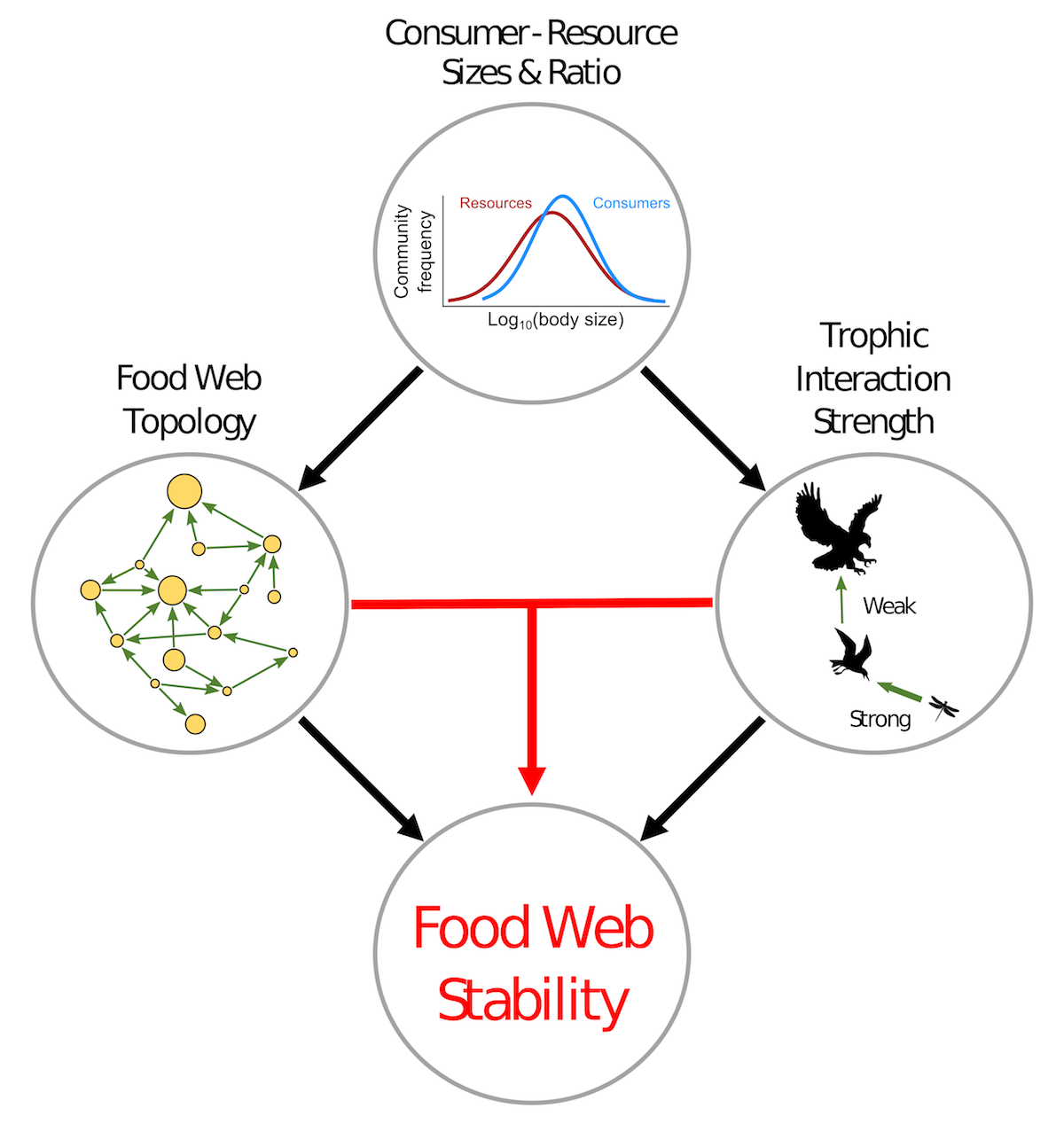Research
Consumer-Resource Size Ratios Constrain Trophic Structure, Strength, and Stability
Determining how food webs maintain dynamical stability is a major challenge in community ecology. Although previous studies have identified certain network properties—specifically network topology and interaction strengths—as dominant influences on stability, limited work has explained how these structural and dynamical patterns emerge from individual trophic links—what eats what. Here, we bridge this gap by constructing a model that maps consumer-resource size-ratios to both trophic topology (modularity, connectance, and network size) and the distribution of interaction strengths within communities. Using eigenvalue analysis, we show that network topology and interaction strengths have diverse effects on stability that are ultimately rooted in consumer-resource size-ratio distributions. By linking the properties of individual species interactions with network structure and stability, this work clarifies the underlying principles of ecological models and simulations and will help improve current management strategies for sustaining ecosystems.

Temperature Dependent Food Web Stability
Work in progress…
Dimensionality Induced Network Motif Pattern
Work in progress…